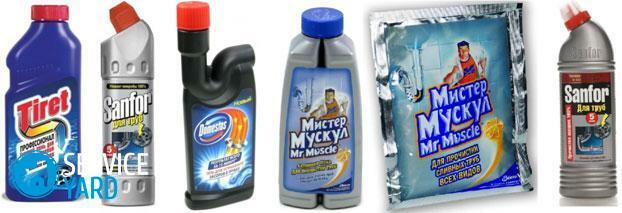
- What is valuable about milk?
- What is milk?
- Other types of milk
- Do I need to boil milk?
- Is it possible to pasteurize milk at home?
- Boiling milk
- What not to do?
- Define the quality of
The fact that milk is useful, people knew in ancient times. As well as that this product spoils quite quickly. Therefore, they invented many ways to process it, allowing to increase the shelf life. Such methods exist for every people, regardless of the milk of which animals were used for food in this or that area. Pasteurization and boiling are especially popular. But is it necessary to boil pasteurized milk? Now we will discuss this.
to the contents ↑What is valuable about milk?
Milk is an emulsion, that is a mixture of a variety of useful substances. It is full of proteins, fats, carbohydrates, trace elements, vitamins - in short, everything that is necessary for growth and development. And how else? It is intended, first of all, to feed newborn babies, calves, kids, foals and all other mammals.
However, an adult person's milk is useful, and it is not accidental that it is prescribed to people with very different diseases.
Important! For diabetics, it is very important that milk contains lactose - milk sugar, which is most miraculously absorbed and in those cases when ordinary sugar turns blood into syrup and blocks nerve endings.
If a person regularly consumes milk, he is less likely to break his own bones, he is unlikely to suffer from calcium leaching. Milk protects against many other diseases.
Important! Those who do not tolerate whole milk will benefit from sour-milk products, as well as all kinds of milk derivatives with bifidobacteria.
to the contents ↑What is milk?
In the modern world, the vast majority of people buy milk in the store. This is done not only by the townspeople, but also by the villagers. And it is very useful to know what kind of product is on the counter.
No milk can be found in the stores, which has not been processed. Even in specialized ones. There you can see milk:
- in glass or plastic bottles;
- in plastic bags;
- in cardboard boxes of different shapes.
Milk that goes on sale can be:
- pasteurized;
- ultra-pasteurized;
- sterilized;
- homogenized;
- is ion-exchangeable;
- is drinking;
- vitaminized;
- melted;
- with coffee or cocoa;
- cream.
Important! Pasteurized, sterilized and melted milk, as well as cream, is available in almost every store. The remaining species are much less common.
Pasteurized
Pasteurization is carried out in two ways:
- by heating to 60 ° C for an hour;
- by heating to 80 ° C for 30 minutes.
Typically, pasteurized milk is sold in plastic bags, but sometimes in bottles.
Important! According to the standards, its shelf life is from 3 to 5 days, then the milk sucks. It turns out curdled milk. Nevertheless, on the packaging you can see a longer shelf life - as is evidenced by this, you can guess yourself: most likely, during pasteurization, artificial substances preventing the spoilage of the product were added.
Sour-milk products, obtained naturally from the store milk, are not always suitable for food. However, in any case, the taste of the pasteurized milk will be sour.
When pasteurization, various microbes and spores of fungi are killed, which means that you do not need to boil pasteurized milk. The product retains most of its useful properties, so this treatment method is considered to be the best not without reason.
Important! Ultra-pasteurization - heating to a higher temperature and for a longer time. This process can be considered as a transition to sterilization, only preservative products are not added to the product. Shelf life is increased to six months.
Pasteurization at the
factory Pasteurize the milk with special pumps equipped with flow meters:
- Milk is cleaned from foreign matter.
- Milk is placed in a special temporary container.
- A special pump directs the liquid to the pasteurization unit.
- The liquid is heated to 45 ° C.
- Milk is pumped to a separator where the cream is separated.
- Normalized milk enters the next unit where homogenization takes place.
- The product is again sent to a pasteurization plant and heated to 85 ° C.
- Milk is cooled - for this purpose cold water is started between the plates of the pasteurizer.
- Pasteurized milk is placed in a specialized container, and then fasuyut and sent to the refrigerator.
Sterilized
Sterilization occurs at a higher temperature - the milk is brought to a boil. Naturally, this way of processing allows you to deal with all the bacteria. However, vitamins are destroyed, and in order for the product to remain fresh for a long time, preservatives are often added to it.
Important! Milk can be stored much longer than pasteurized, and when it turns off - no curdled milk does not work. The one that was left in the tetrapack, forgotten in the refrigerator, a bitter taste and a putrid smell.
Unfortunately, not all manufacturers strictly adhere to the technology. There are cases when under the guise of pasteurized or sterilized milk sold reconstituted from dry.
Important! In milk, antibiotics can not be added, but unfortunately, some manufacturers do this - in order to more effectively deal with bacteria. To distinguish such a fake from a quality product in appearance is almost impossible.
to content ↑Other types of milk
Such species as homogenizing, ionizing or milk with the addition of cocoa or coffee are not found everywhere. Many buyers are not even aware of their existence.
Homogenized
The mark "homogenized" surprises many. Meanwhile, there is nothing surprising in this definition. Such a label means that the product is homogeneous. Fats are broken up during production and evenly distributed throughout the mass.
Important! This is quite good milk, but the cream of it will not work.
This method of processing was proposed in the 80s of the last century. For a long time it was believed that if a person often uses such a product, plaques adhere on the walls of the vessels, since during the homogenization a special enzyme is formed. Such a drink was not recommended for people with a penchant for cardiovascular disease. But now this opinion is refuted.
Ionit
In this calcium product, which is rich in ordinary milk, is replaced by potassium or sodium. This milk is mainly used for cooking baby food.
Drinking, fat-free, vitaminized
From such a strange name, because any milk can be called drinking. In fact - this is ordinary boiled milk, without any additional ingredients. Only boiled it in the factory.
Milk with coffee
Milk with coffee and cocoa is not so common. Before adding additional components, the product is sterilized or pasteurized. A large amount of fat is removed from the fat-free product - this is done with the help of a separator. The greasy part is a cream.
Ghee
Finally, melted milk, which undergoes pasteurization at a higher temperature - 95 ° C, and then aged for three to four hours in production tanks.
to the contents ↑Do I have to boil the milk?
Raw milk boil, of course, is needed for a number of reasons:
- it can contain bacteria that are dangerous to humans;
- cows can have parasites that are transmitted along with milk.
But is it necessary to boil pasteurized milk? Doing this is not necessary, because with pasteurization, dangerous bacteria and fungi have already died. However, in some cases, such milk is boiled, for example:
- to extend the shelf life;
- to use for baby food;
- if the product has been frozen.

Do I need to boil pasteurized milk for my baby and why?
For baby food, it is best to use the pasteurized milk, because it does not contain preservatives, and accordingly - does not provoke diathesis and other allergic manifestations.
Important! Cooking on this product can be done from 6-7 months, and a one-year-old baby can already be given cow's milk as a drink.
The matter is that during pasteurization not all microorganisms are removed - some of them have a film that does not collapse at a temperature of 60 ° C.These microbes can be absolutely safe for an adult, but the children's body is sensitive to them.
Freezing
To extend the expiration date, a method such as freezing is sometimes used. During the time when the product is in your freezer, it will not lose its useful properties - and when defrosting, it will also retain them.
Important! It is possible to freeze only once, and after defrosting it is necessary to boil.
to Contents ↑Can I milk the milk at home?
Pasteurize liquid at home - if, for example, you have the opportunity to buy rustic cow or goat milk. You need:
- large saucepan;
- funnel;
- several bottles or cans with tight covers;
- refrigerator.
Important! The pan before the procedure should be washed very well, and it is better to sterilize the cans or bottles, as is usually done with canning.
Homemade pasteurization:
- Pour the milk into a saucepan.
- Bring it to a boil.
- Cool.
- Pour into cans.
- Close tightly. .
- Place in the refrigerator on the bottom shelf or in another cool dark place.
Important! The milk thus treated will remain fresh for about a week.
to content ↑Boiling milk
Boiling is not too complicated, but it is responsible and requires attention. Milk can:
- to escape;
- burned.
For boiling you need;
- large saucepan - glass or stainless steel;
- saucers;
- wooden spoon on the long handle.
Important! Tableware is a very important element:
- In an enamel saucepan, milk very often burns, so it is better to use steel or aluminum.
- Suitable and a container of refractory glass or ceramics.
- It's better if the pan is a thick bottom.
How long does it take to boil?
Boil the milk for a very short time, but all this time should not depart from the stove:
- Rinse the pan.
- Put an inverted saucer on the bottom.
- Pour the milk.
- Put the pan on the fire.
- Wait for the boil.
- Boil 2-3 minutes, taking off the foam and stirring.
When boiling, you can add sugar at a rate of 1 teaspoon per 1 liter. This will increase the shelf life of the product.
Important! Foam is removed only during boiling - when the milk has cooled down, you do not need to remove the film, because there are many useful substances left in it.
to the contents ↑What not to do?
There are several common mistakes that young landladies make. Some things can not be done:
- Heat the milk several times.
- Leave in an open pan after it has boiled.
- Warming in microvibe.
Important! Ware for storage must be very clean.
to the table of contents ↑Determine the quality of
When buying rustic milk, ask the hostess for help from a veterinarian. This question will not surprise her, because every cow owner should regularly show the animal to the doctor and take the milk for analysis. This certificate is a kind of quality certificate.
Shop milk, in theory, should meet the standards, but it does not always happen. You can check the quality yourself:
- Pour a little milk into a clear glass or jar and add a few drops of food vinegar - if there are bubbles, there are harmful additives in the milk.
- In a glass with a liquid product, add a couple drops of iodine - if it turns blue, it means - there is starch in it.
- Put a litmus test into the glass - if it turns blue, there is soda in the liquid, and if it turns red, acid impurities are added.
Now you have found out for yourself whether you need to boil pasteurized milk, and learned about other ways of processing such a product to extend its shelf life. Try to give preference to proven products from manufacturers with a well-deserved reputation in order to only benefit your health.



